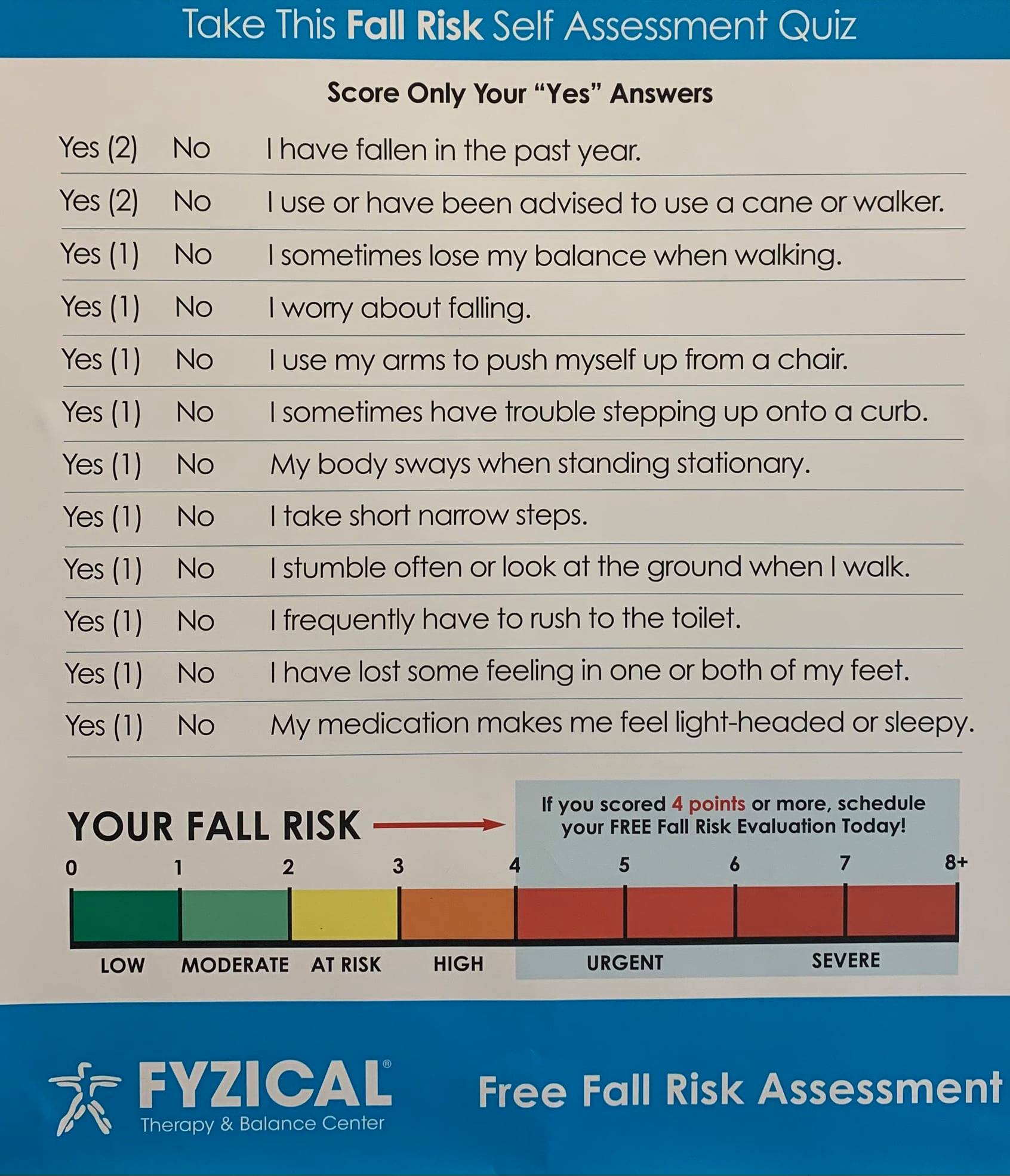About Dementia Fall Risk
About Dementia Fall Risk
Blog Article
Some Of Dementia Fall Risk
Table of ContentsEverything about Dementia Fall RiskThe Best Guide To Dementia Fall Risk7 Simple Techniques For Dementia Fall RiskSee This Report on Dementia Fall RiskThe Definitive Guide for Dementia Fall Risk
You may be nervous because you've had a fall before or since you have actually noticed you're beginning to feel unsteady on your feet. You might have seen changes to your health and wellness, or just feel like you're reducing down a little. Whatever the reason, it isn't uncommon to become careful and shed confidence, and this can stop you doing the points you utilized to do and make you feel extra isolated.If you have actually had a fall or you have actually begun to really feel unsteady, tell your medical professional also if you feel fine otherwise. Your medical professional can examine your balance and the means you walk to see if enhancements can be made. They might be able to refer you for a drops risk assessment or to the drops prevention service.
This information can be obtained via meetings with the individual, their caregivers, and an evaluation of their clinical documents. Begin by asking the private concerning their history of falls, consisting of the frequency and situations of any type of current falls. Dementia Fall Risk. Ask about any kind of mobility troubles they might experience, such as unstable or problem walking
Conduct a detailed testimonial of the individual's medicines, paying certain focus to those understood to boost the threat of drops, such as sedatives or drugs that reduced blood pressure. Identify if they are taking several drugs or if there have been recent modifications in their medication program. Review the person's home environment for possible hazards that can boost the risk of drops, such as inadequate illumination, loosened rugs, or lack of grab bars in the washroom.
The Ultimate Guide To Dementia Fall Risk
Guide the person through the autumn threat assessment kind, discussing each concern and videotaping their feedbacks properly. Make sure that the individual understands the function of the evaluation and really feels comfy offering honest responses. Calculate the overall danger score based upon the actions offered in the analysis form. Identify the individual's risk classification (reduced, tool, or high) based on the total score and the visibility of automatic high-risk condition variables.
Routinely monitor the person's progression and reassess their threat of falls as required. Supply continuous education and assistance to advertise safety and reduce the danger of falls in their day-to-day living activities.
Several studies have revealed that physical treatment can help to minimize the danger of falling in grownups ages 65 and older. In a brand-new study (that looked at falls risk in females ages 80 and older), researchers calculated the economic influence of selecting physical treatment to protect against drops, and they located that doing so conserves $2,144, including all the covert expenses of your time, pain, missed out on life events, and the dollars paid for services.
The Single Strategy To Use For Dementia Fall Risk
Inspecting your heart rate and blood stress measurements at rest and while you turn (from resting or existing to standing). A simple examination of your reasoning (cognitive) abilities. Evaluating your balance, stamina, and walking capacity. A basic vision test. Evaluating your feet and shoes. A home security evaluation. Based upon the assessment results, your physiotherapist will certainly create a strategy that is customized to your details requirements.
Older adults that have trouble walking and speaking at the same time are at a greater threat of falling. Dementia Fall Risk. To assist boost your security during everyday tasks, your physiotherapist may design a training program that will certainly challenge you to keep standing and strolling while you do another job. Instances consist of strolling or standing while counting backwards, having a discussion, or carrying a bag of groceries
Your physiotherapist also can recognize which tasks you ought to avoid to remain secure. Community-based falls avoidance programs assist individuals to: Reduce their concern of dropping. Establish goals for raising their exercise. Make their homes safer. Work out click to read more much more to increase their stamina and balance. These programs typically are led by volunteer trainers.
Some Known Questions About Dementia Fall Risk.

Measles, or rubeola, is an extremely contagious, acute viral transmittable illness caused by the measles virus. Some individuals consider measles as simply a breakout and fever that clears in a few days; however, measles can create significant wellness problems, particularly in kids more youthful than 5-years-old. The finest protection versus measles is the measles, mumps, and rubella (MMR) vaccine.
Loss are a typical cause of injury among older grownups. According to the CDC, in one year alone, fall-related injuries added to over $50 billion in medical costs (Dementia have a peek at this website Fall Risk). In hospital setups, older grownups are at specifically high danger of drops because their minimized wheelchair from being confined to a room or bed.
6 Easy Facts About Dementia Fall Risk Described

She has no history of falls, her gait is stable, and she invalidates with no problems. The previous nurse states that she calls for help to the restroom when she needs to go.
Examples of usual fall interventions/measures consist of: Ensuring an individual's necessary items are within reach. Beyond recognizing just how to use the Johns Hopkins Autumn Risk Assessment important link Tool, it's important that facilities integrate its use right into a more thorough loss prevention strategy.
Report this page